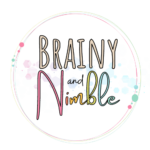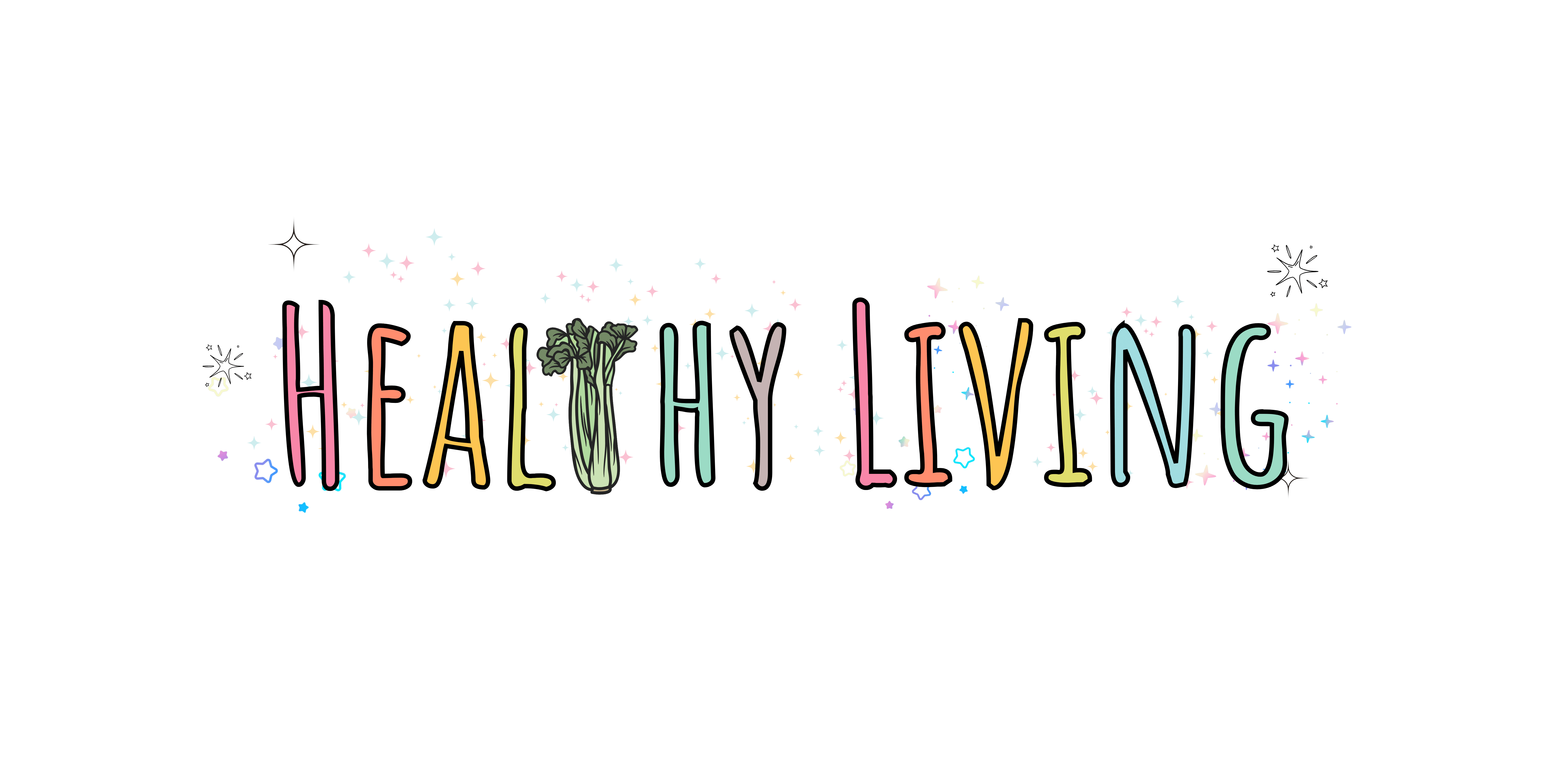Website Disclaimer
Grade levels are intended to offer a broad overview and some guidance for those that find this approach helpful. You’ll find certain subjects covered multiple times, along with a few recurring links. Feel free to delve into areas that both you and your child find most suitable and engaging.
As with all online content, it’s important to supervise the materials linked to this site to ensure they align with your family values and educational approach.
Click On The Subjects Below To Get Started
Anatomy
Teaching anatomy to kids can be beneficial for encouraging healthy choices and maintaining an overall well-being in several ways:
Body Awareness:
- Understanding anatomy helps kids develop a sense of body awareness. This awareness encourages them to pay attention to their bodies and make choices that support their health.
Healthy Eating Habits:
- Learning about the digestive system and the role of different organs in processing food can help kids make informed choices about nutrition. They may develop an appreciation for the importance of balanced meals and the impact of food on their bodies.
Physical Activity:
- Knowledge of the musculoskeletal system can inspire kids to engage in physical activities. Understanding how muscles and bones work together may encourage them to participate in sports, exercise, and other activities that promote a healthy lifestyle.
Personal Hygiene:
- Teaching kids about the skin and its functions can emphasize the importance of personal hygiene. Understanding how skin protects the body and how cleanliness contributes to overall health encourages good hygiene practices.
Emotional Well-being:
- Explaining the connection between the brain and emotions can help kids understand the importance of mental health. They may learn to recognize and manage their emotions, contributing to overall emotional well-being.
Incorporating age-appropriate anatomy education into a child’s learning experience can provide a solid foundation for making informed and healthy choices throughout their lives. It empowers them to take an active role in their well-being and create a positive attitude toward health and self-care.
Recommended Videos for Younger Ages:
- Learn About Parts Of The Body with Milo The Monster
- Elmo’s World: Ears
- With My Heart | Kids Songs | Super Simple Songs
- Move! | Dance Song for Kids | Super Simple Songs
- Head Shoulders Knees & Toes (Speeding Up) | Nursery Rhyme | Super Simple Songs
- The Human Body for children – Body Parts for Kids
- “Body Parts” – StoryBots Super Songs Episode 2 | Netflix Jr
- Lungs – Twin Lungs | Body Parts Songs | Pinkfong Songs for Children
- Digestion – Where Does My Food Go? | Body Parts Songs | Pinkfong Songs for Children
- Brain – The Captain Brain | Body Parts Songs | Pinkfong Songs for Children
- Why Do People Look Different?
Ask the StoryBots FULL EPISODE | Netflix Jr
Recommended Videos:
- How Your Brain Works
- Hello Learners! Meet Your Brain! | Lesson 1
- Science for kids | Body Parts – THE HUMAN BRAIN | Experiments for kids | Operation Ouch
- Meet Your Neurons! | Lesson 2
- How Your Nails Grow? | The Dr. Binocs Show | Best Learning Videos For Kids | Peekaboo Kidz
- How Your Heart Works
- Circulatory System and Pathway of Blood Through the Heart
- The Heart, Part 1 – Under Pressure: Crash Course Anatomy & Physiology #25
- How Your Teeth Work
- How Your Teeth Work? – The Dr. Binocs Show | Best Learning Videos For Kids | Peekaboo Kidz
- WHAT ARE THE DIFFERENT TYPES OF TEETH?
- How Your Eyes Work
- How Our Eyes Work? – Senses for Kids
- Human Eye – The Dr. Binocs Show | Best Learning Videos For Kids | Peekaboo Kidz
- How the Eye Works
- Vision: Crash Course Anatomy & Physiology #18
- A Journey in Your Nose to See How Smell Works
- How mucus keeps us healthy – Katharina Ribbeck
- How Do We Smell?
- How Your Nose Works? – The Dr. Binocs Show | Best Learning Videos For Kids | Peekaboo Kidz
- How do dogs “see” with their noses? – Alexandra Horowitz How Your Nose Works
- How Your Skin Works
- Why do we sweat? – John Murnan
- Integumentary System
- How Your Skin Works? – The Dr. Binocs Show | Best Learning Videos For Kids | Peekaboo Kidz
- Why Do We Sweat? | COLOSSAL QUESTIONS
- Science for kids | SMELLY SWEAT | Experiments for kids | Operation Ouch
- How the Endocrine System Works
- Endocrine System
- Endocrine System, Part 1 – Glands & Hormones: Crash Course Anatomy & Physiology #23
- Intro to the endocrine system | Health & Medicine | Khan Academy
- How Your Immune System Works
- Immune System
- Immune System, Part 1: Crash Course Anatomy & Physiology #45
- Antibiotics, Antivirals, and Vaccines
- How Your Muscles Work
- The Human Body for children – Muscles for Kids
- How Do Our Bodies Move?
- Muscle Tissues and Sliding Filament Model
- Muscles, Part 1 – Muscle Cells: Crash Course Anatomy & Physiology #21
- Big Guns: The Muscular System – CrashCourse Biology #31
- How your muscular system works – Emma Bryce
- Nervous System
- The Nervous System, Part 1: Crash Course Anatomy & Physiology #8
- Central Nervous System: Crash Course Anatomy & Physiology #11
- How Your Lungs Work
- Respiratory System
- Respiratory System, Part 1: Crash Course Anatomy & Physiology #31
- The Skeletal System – Bones for Kids (Updated Version)
- Your Super Skeleton!
- How Your Bones and Skeleton Works
- Science for kids | Body Parts – Joints & Skeletal System | Experiments for kids | Operation Ouch
- Skeletal System
- The Skeletal System: Crash Course Anatomy & Physiology #19
- Joints: Crash Course Anatomy & Physiology #20
- How the Urinary System Works
- Excretory System and the Nephron
- Urinary System, Part 1: Crash Course Anatomy & Physiology #38
- The Urinary System
- How do your kidneys work? – Emma Bryce
- How the Digestive System Works
- Digestive System: Ingestion to Egestion Explained in Simple Words
- Digestive System
- What is the gut microbiome?
- The Invisible Universe Of The Human Microbiome
- Biomolecules (Updated 2023)
- How your digestive system works – Emma Bryce
- Metabolism & Nutrition, Part 1: Crash Course Anatomy & Physiology #36
- Metabolism & Nutrition, Part 2: Crash Course Anatomy & Physiology #37
- Digestive System, Part 1: Crash Course Anatomy & Physiology #33
- Digestive System, Part 2: Crash Course Anatomy & Physiology #34
- Digestive System, Part 3: Crash Course Anatomy & Physiology #35
Practicing Good Hygiene
The Vital Importance of Good Hygiene
Good hygiene practices are the cornerstone of maintaining optimal health and well-being. From preventing the spread of infectious diseases to promoting overall cleanliness and confidence, practicing good hygiene habits plays a crucial role in our daily lives.
Disease Prevention:
- One of the primary benefits of good hygiene is its role in preventing the spread of infectious diseases. Regular handwashing with soap and water helps remove harmful germs and bacteria that can cause illnesses such as colds, flu, and gastrointestinal infections. Proper hygiene practices, such as covering your mouth when coughing or sneezing and avoiding close contact with sick individuals, can significantly reduce the transmission of contagious diseases within communities.
Personal Health and Well-being:
- Maintaining good hygiene habits contributes to personal health and overall well-being. Regular bathing or showering helps remove dirt, sweat, and dead skin cells from the body, reducing the risk of skin infections and body odor. Brushing and flossing your teeth daily, along with regular dental check-ups, are essential for oral health and preventing tooth decay, and gum disease.
Social and Professional Relationships:
- Fresh breath, clean clothes, and groomed appearance enhance self-confidence and make a favorable impression in social and professional settings.
Mental and Emotional Well-being:
- The connection between good hygiene and mental/emotional well-being should not be overlooked. Engaging in regular grooming routines, such as bathing, grooming hair, and maintaining clean attire, can boost self-esteem and promote a sense of pride in one’s appearance. Feeling clean and refreshed contributes to a positive mood and outlook on life, reducing stress and anxiety levels. Moreover, practicing good hygiene rituals can serve as self-care rituals, nurturing a sense of self-worth and overall happiness.
Prioritizing good hygiene habits can reap countless benefits for ourselves and future generations.
Recommended Videos:
- Wash your hands Children’s Song | Wash us – Healthy habits Song | Hooray Kids Songs & Nursery Rhymes
- Hygiene Habits for Kids – Compilation – Handwashing, Personal Hygiene and Tooth Brushing
- Why do We Brush Our Teeth? | Health for Kids | SciShow Kids
- How to Brush Your Teeth – Tooth Brushing for Kids
- How to Brush Your Teeth – Life Skills for Kids!
- How to Floss Your Teeth – Life Skills for Kids!
- All About Your Teeth | Full Episode | Operation Ouch
- Visiting the Dentist! | Health for Kids | SciShow Kids
- Daniel Tiger’s Neighborhood FULL EPISODE | Daniel Goes to the Hospital | PBS KIDS
- How to Wash & Brush Your Hair – Life Skills for Kids!
Healthy Sleep Habits
Sleep is a fundamental aspect of overall health and well-being, and it plays a crucial role in various physiological and cognitive functions. Here are some key reasons why sleep is important:
Physical Restoration:
- During sleep, the body undergoes repair and restoration processes. This includes the release of growth hormone, muscle repair, and the production of cells that contribute to overall health and growth.
Cognitive Function:
- Sleep is essential for cognitive functions such as memory, learning, and problem-solving. Adequate sleep supports optimal brain function and enhances cognitive performance.
Emotional Well-being:
- Sleep plays a role in regulating mood and emotional well-being. Lack of sleep can contribute to irritability, mood swings, and an increased susceptibility to stress.
Immune Function:
- Quality sleep is associated with a strengthened immune system. Adequate rest helps the body defend itself against infections and illnesses.
In summary, prioritizing good sleep hygiene and ensuring an adequate amount of quality sleep is essential for overall health and functioning. The National Sleep Foundation recommends that adults aim for 7-9 hours of sleep per night for optimal health and well-being.
Recommended Videos:
- Work It Out Wombats! FULL EPISODE | The Sleepover/Secret Tunnels | PBS KIDS
- Kids Share their Bedtime Routine | Show & Tell | HiHo Kids
- This Is The Way We Go To Bed | Kids Songs | Super Simple Songs
- Sesame Street Monster Meditation #2: Goodnight Body with Elmo and Headspace
- Sesame Street: How do Elmo and Abby Get Ready for Bed?
- IT’S A BEAUTIFUL DAY IN MY NEIGHBORHOOD | Katerina’s Bedtime Book | PBS KIDS
How to Read Food Labels
The Vital Importance of Good Hygiene
Nutrition labels can seem a bit overwhelming, but breaking them down into simple components can make them easier to understand.
- Serving Size: This tells you the recommended portion size for the food. All the information on the label is based on this serving size.
- Calories: This indicates the amount of energy you get from one serving of the food.
- Nutrients: This section provides information about the key nutrients in the food. The two main types are:
- Macronutrients:
- Fat: Shows the total and saturated fat content. Aim for low saturated fat and avoid trans fat.
- Carbohydrates: Includes dietary fiber and sugars. Look for foods high in fiber and low in added sugars.
- Protein: Important for muscle health. Choose a variety of protein sources.
- Micronutrients:
- Vitamins and Minerals: These are essential for various bodily functions. Pay attention to vitamin D, calcium, iron, and potassium.
- % Daily Value (% DV): This gives you an idea of how much a specific nutrient in a serving of food contributes to a daily diet. The percentages are based on a daily intake of 2,000 calories, which is a general reference point.
* Footnote: Individual calorie/nutritional needs may vary *
Understanding nutrition labels is a valuable skill for making informed and healthier food choices.
Recommended Videos:
- Reading the Food Label
- How to read a nutrition facts label
- How to Read Nutrition Facts | Food Labels Made Easy
- How to Read Nutrition Information → Food Labels EXPLAINED
- Food Labels – Nutrition Labels – How To Read Food Labels Nutrition Facts
- The Food Label and You: Game Show Review (Are You Smarter Than A Food Label?) (Historical PSA)
- Healthy or junk food? Busting food labels (CBC Marketplace)
Vitamins & Minerals
The Vital Importance of Good Hygiene
Vitamins and minerals are essential micronutrients that play crucial roles in various physiological functions within the body. Here’s a brief overview of some key vitamins and minerals and their respective functions:
Vitamins:
- Vitamin A (Retinol):
- Function: Essential for vision, immune function, and skin health.
- Sources: Carrots, sweet potatoes, spinach, kale, dairy products.
- Vitamin B Complex (B1, B2, B3, B5, B6, B7, B9, B12):
- Functions:
- Energy metabolism (B1, B2, B3, B5, B6, B7, B12).
- DNA synthesis (B9, B12).
- Red blood cell formation (B6, B9, B12).
- Sources: Whole grains, meat, poultry, fish, eggs, dairy, leafy greens.
- Functions:
- Vitamin C (Ascorbic Acid):
- Function: Antioxidant, promotes collagen synthesis, supports immune function.
- Sources: Citrus fruits, strawberries, bell peppers, broccoli.
- Vitamin D (Calciferol):
- Function: Facilitates calcium absorption for bone health, supports immune function.
- Sources: Sunlight, fatty fish, fortified dairy products.
- Vitamin E (Tocopherol):
- Function: Antioxidant, protects cells from damage.
- Sources: Nuts, seeds, vegetable oils, spinach.
- Vitamin K (Phylloquinone, Menquinone):
- Function: Essential for blood clotting and bone metabolism.
- Sources: Leafy greens, broccoli, Brussels sprouts.
Minerals:
- Calcium:
- Function: Essential for bone and teeth health, muscle function, blood clotting.
- Sources: Dairy products, leafy greens, fortified foods.
- Iron:
- Function: Component of hemoglobin (carries oxygen in the blood), supports metabolism.
- Sources: Red meat, poultry, fish, beans, fortified cereals.
- Magnesium:
- Function: Supports muscle and nerve function, bone health, energy production.
- Sources: Nuts, seeds, whole grains, leafy greens.
- Potassium:
- Function: Regulates fluid balance, supports nerve and muscle function.
- Sources: Bananas, oranges, potatoes, spinach.
- Sodium:
- Function: Regulates fluid balance, nerve function.
- Sources: Table salt, processed foods.
- Zinc:
- Function: Supports immune function, wound healing, DNA synthesis.
- Sources: Meat, dairy, nuts, legumes.
- Iodine:
- Function: Essential for thyroid hormone production.
- Sources: Seafood, iodized salt.
- Selenium:
- Function: Antioxidant, supports thyroid function.
- Sources: Brazil nuts, fish, poultry.
It’s important to note that a balanced diet with a variety of foods is the best way to ensure adequate intake of vitamins and minerals. If you have specific dietary concerns or conditions, it’s advisable to consult with a healthcare professional or a registered dietitian.
Making Healthy Choices
Making healthy choices is crucial for maintaining overall well-being. Here are some tips to help you make healthier decisions in various aspects of your life:
Balanced Diet:
- Eat a Variety of Foods: Include fruits, vegetables, whole grains, lean proteins, and healthy fats in your meals.
- Limit Processed Foods: Choose whole, unprocessed foods over highly processed options.
Hydration:
- Drink Water: Stay hydrated by drinking an adequate amount of water throughout the day.
- Limit Sugary Drinks: Reduce the consumption of sugary sodas and beverages.
Exercise:
- Regular Physical Activity: Aim to incorporate some form of exercise throughout the week.
Sleep:
- Prioritize Sleep: Aim for 7-9 hours of quality sleep each night.
- Create a Routine: Establish a consistent sleep schedule to improve sleep quality.
Stress Management:
- Practice Relaxation Techniques: Incorporate activities like deep breathing, meditation, or yoga to manage stress.
- Time Management: Organize your schedule to reduce stress and avoid unnecessary pressures.
Mental Health:
- Self-Care: Prioritize self-care activities that bring you joy and relaxation.
- Seek Help: If needed, don’t hesitate to seek professional help for mental health concerns.
Read Labels:
- Nutrition Labels: When grocery shopping, check nutrition labels and choose products with minimal additives and sugars.
- Ingredient Lists: Be aware of the ingredients in processed foods.
Regular Health Check-ups:
- Medical Check-ups: Schedule regular check-ups with healthcare professionals to monitor your health.
Making healthy choices is a gradual process, and small changes can lead to significant improvements over time. It’s important to focus on creating sustainable habits that align with your individual preferences and lifestyle. If you have specific health concerns or goals, consider consulting with healthcare professionals or a registered dietitian for personalized advice.
Recommended Videos:
- DANIEL TIGER’S NEIGHBORHOOD | Snacktime at Jodi’s House | PBS KIDS
- Learn About Fruits And Vegetables with Milo the Monster | Eat A Rainbow
- Ed Said | EdVentures in Healthy Eating – Whole Grains | MPB
- Movie: Healthy Weight
- Wellbeing for Children: Healthy Habits
- Healthy Eating: An introduction for children aged 5-11
- Healthy Eating for Kids – Learn About Carbohydrates, Fats, Proteins, Vitamins and Mineral Salts
- You Are What You Eat!
- How to Make Healthy Food Changes
- The dangers of processed foods
- Healthy or junk food? Busting food labels (CBC Marketplace)
- GENETIC ENGINEERING | What Is GENETIC Engineering? | Genetics | The Dr Binocs Show | Peekaboo Kidz
- Genetically Modified Organisms (GMO): the future? | AnyStory made by Cooler Media
- What is genetically modified food? – BBC What’s New
The Food Groups
In the journey towards a healthier lifestyle, understanding the fundamentals of nutrition is paramount. At the core of this knowledge lies an awareness of the essential food groups that form the foundation of a balanced diet.
Grains:
- Grains serve as a primary source of energy, offering essential carbohydrates, fiber, vitamins, and minerals. This food group includes whole grains such as oats, brown rice, quinoa, and whole wheat bread, as well as refined grains like white rice and pasta. Aim to incorporate whole grains into your meals whenever possible, as they provide more nutrients and fiber than their refined counterparts.
Fruits:
- Rich in vitamins, minerals, antioxidants, and fiber, fruits are nature’s nutritional powerhouses. From vibrant berries and citrus fruits to sweet bananas and apples, there’s a wide variety to choose from. Enjoy them fresh, frozen, or dried, and aim to include a colorful assortment in your daily diet. Whether as a standalone snack, a topping for yogurt, or a component of a refreshing smoothie, fruits add both flavor and nutrition to your meals.
Vegetables:
- Vegetables are another essential component of a healthy diet, offering an array of vitamins, minerals, fiber, and antioxidants. From leafy greens like spinach and kale to cruciferous vegetables such as broccoli and cauliflower, each type boasts its unique nutritional profile. Aim to fill half your plate with vegetables at each meal, opting for a diverse range of colors and textures to maximize nutrient intake.
Protein:
- Protein is crucial for building and repairing tissues, supporting immune function, and maintaining muscle mass. This food group encompasses both animal and plant-based sources, including lean meats, poultry, fish, eggs, dairy products, legumes, tofu, tempeh, and nuts. Incorporating a variety of protein sources into your diet can help ensure you’re meeting your body’s needs for essential amino acids.
Dairy (or Dairy Alternatives):
- Dairy products provide calcium, vitamin D, protein, and other essential nutrients necessary for bone health and overall well-being. However, if you’re lactose intolerant or following a vegan lifestyle, there are plenty of dairy alternatives available, such as fortified plant-based milks (e.g., almond, soy, coconut), yogurt, and cheese. Choose options that are low in added sugars and fortified with essential vitamins and minerals.
Remember to prioritize variety, moderation, and and listen to your body’s hunger and fullness cues. With this knowledge as your guide, you’ll be well-equipped to make healthier choices and nourish your body for optimal health and vitality.
Recommended Videos:
- The 5 Fabulous Food Groups
- Food Groups for Kids | Learn about the five food groups and their benefits
- Nutrition: Importance of the Five Food Groups
- FIT KIDS 104 Proteins
- How to Create a Healthy Plate
- Micro-Nutrients and their importance
- Fortified Info on Fiber – First With Kids – UVM Medical Center
- Ed Said | “Whole Grains are the Way to Go” | MPB
Emotions
Recommended Videos:
- Kids Feelings and Emotions SONG Animation with A Little SPOT
- Everything Is Going To Be Alright | Super Simple Songs
- Elmo the Grouch | Sesame Street Full Episode
- Feelings | Word Power | PINKFONG Songs for Children
- Sesame Street: Name That Emotion with Murray!
- “Emotions” – StoryBots Super Songs Episode 8 | Netflix Jr
- Daniel Tiger’s Neighborhood FULL EPISODE | Daniel Gets Mad / Katerina Gets Mad | PBS KIDS
- Coping Skills For Kids – Managing Feelings & Emotions For Elementary-Middle School | Self-Regulation
A Little Spot of Anger By Diane Alber READ ALOUD
A Little Spot of Worry By Diane Alber READ ALOUD
A Little Spot of Sadness By Diane Alber READ ALOUD
A Little Spot of Optimism By Diane Alber READ ALOUD
A Little Spot of Frustration By Diane Alber READ ALOUD
- Sesame Street: Mark Ruffalo: Empathy
Mindfulness
Recommended Videos:
- Brain Break – The Fist breathing exercise
- Loving-Kindness Mindfulness for Kids
- Mindfulness Practice: The 5 Senses
- Bear Breaths | Breathing Exercises for Kids Mindfulness (Children Anxiety Relief Meditation)
- Pufferfish Breaths | Breathing Exercises for Calm Kids Self-Regulation (Mindfulness for Kids)
- Breathing Exercise for Kids for Focus and Concentration | Kids Yoga | Figure 8 Breath | Yoga Guppy
- Bubble Bounce! Mindfulness for Children (Mindful Looking)
- Thought Bubbles! Mindfulness for Children. (thought awareness)
- Mindful Moment: Balloon Man Practice
- Be the Pond | Mindfulness for Kids | Cosmic Kids Zen Den
- Be the Pond – Kids Mindfulness Videos (Deaf Friendly with BSL) – Cosmic Kids Zen Den
- Butterfly Hug! 6-Minute Self-Soothing Meditation For Children Using The Butterly Hug Technique.
- Mindful Meditation for Kids: A Peaceful Beach Meditation
- Active Listening Game
- The Importance of Listening
- The 5-4-3-2-1 Method: A Grounding Exercise to Manage Anxiety
Gratitude
Download Our FREE Health Curriculum Checklist Below
Learn about celebrations that take place across the world and gain a deeper appreciation for the global tapestry of cultures. Each holiday is accompanied by an exciting craft project or recipe for the whole family to take part in.
- Holidays for Every Month
- Cultures & Traditions
- Crafts
More Content Coming Soon
At Brainy and Nimble, we are dedicated to providing comprehensive educational resources. Additional grade levels and enriching content are in the pipeline. Stay tuned for our upcoming additions as we continue to expand our offerings and support learners at every stage of their educational journey.

Please note that this website contains affiliate links, through which I earn a small commission from any purchases made. While it is not mandatory to use these links, your support is always greatly appreciated as these funds help support the maintenance and development of this website.
This commission comes at no additional cost to you.



